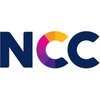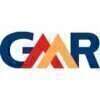Filter interviews by
TCE Interview Questions and Answers
235 Interview questions
Contractor profit refers to the financial gain a contractor earns from completing a project after covering all expenses.
Profit is calculated as total revenue minus total costs.
It includes direct costs (labor, materials) and indirect costs (overhead, administrative expenses).
For example, if a contractor bids $100,000 for a project and spends $80,000, the profit is $20,000.
Profit margins can vary by industry; constr...
RA bills include various tax deductions like GST, TDS, and others that impact the final billing amount.
GST (Goods and Services Tax) - A tax levied on the supply of goods and services, typically at rates of 5%, 12%, 18%, or 28%.
TDS (Tax Deducted at Source) - A percentage of the payment deducted by the payer for tax purposes, applicable on certain payments.
Income Tax - Applicable if the billing entity is subject to ...
Experienced in Cadmatic modeling for instrumentation design, focusing on accuracy and efficiency in complex projects.
Proficient in creating 3D models for instrumentation systems, ensuring precise alignment with project specifications.
Utilized Cadmatic for piping and instrumentation diagrams (P&IDs), enhancing clarity and communication among teams.
Implemented design changes in real-time, allowing for quick adju...
Intrigation refers to the integration of various systems or components in engineering projects for optimal functionality.
Intrigation involves combining different engineering disciplines, such as civil, mechanical, and electrical.
For example, in a building project, intrigation ensures that structural design aligns with electrical and plumbing systems.
It enhances project efficiency by streamlining communication amon...
Concrete is a composite material made from cement, water, aggregates, and additives, used for construction and infrastructure.
Concrete is composed of cement, water, fine aggregates (sand), and coarse aggregates (gravel or crushed stone).
It is known for its high compressive strength, making it ideal for structural applications like beams and columns.
Concrete can be molded into various shapes and sizes, allowing for...
The IS code for tiles is IS 15622:2006, which specifies standards for ceramic tiles used in construction.
IS 15622:2006 covers specifications for ceramic tiles.
It includes guidelines for dimensions, surface quality, and performance.
The code applies to various types of tiles, including glazed and unglazed.
Example: Vitrified tiles are also covered under this standard.
Various tests for tiles assess durability, water absorption, slip resistance, and aesthetic quality.
Water Absorption Test: Measures how much water a tile can absorb, indicating its porosity.
Slip Resistance Test: Evaluates the friction of a tile surface to prevent slips, often using the Pendulum Test.
Breaking Strength Test: Determines the load a tile can withstand before breaking, ensuring durability.
Frost Resistan...
A UPS (Uninterruptible Power Supply) provides backup power and surge protection to electronic devices during outages.
UPS systems are crucial for data centers to prevent data loss during power failures.
There are different types of UPS: Offline, Line-Interactive, and Online.
For example, an Online UPS continuously converts incoming AC to DC and then back to AC, providing clean power.
UPS units can also protect against...
CT, or Current Transformer, is an electrical device used to measure alternating current by producing a reduced current proportional to the input.
CTs are essential for monitoring and protecting electrical systems.
They work on the principle of electromagnetic induction.
Commonly used in substations and industrial applications.
Example: A 1000:5 CT reduces a 1000A current to 5A for measurement.
CTs help in isolating hig...
CAD files typically use extensions like .dwg, .dxf, and .dgn, which are essential for storing design data and drawings.
.dwg - The primary file format for AutoCAD, containing 2D and 3D design data.
.dxf - Drawing Exchange Format, used for enabling data interoperability between AutoCAD and other software.
.dgn - Used by MicroStation, another CAD software, for 2D and 3D design files.
TCE Interview Experiences
268 interviews found
I applied via Company Website and was interviewed in Oct 2021. There were 3 interview rounds.

(2 Questions)
- Q1. Question regarding pile foundation, what is the density of bentonite
- Ans. The density of the freshly prepared bentonite suspension shall be between 1.03 and 1.10 g/ml and before concrete is 1.12g/ml
- Q2. Question regarding well foundation. what is the rate of sinking well in your site
- Ans.
The rate of sinking wells varies based on soil conditions, equipment, and project specifications.
Typical sinking rates range from 0.5 to 2 meters per day, depending on soil type.
In soft clay, wells may sink faster due to lower resistance.
Using advanced drilling techniques can increase efficiency and speed.
For example, a well in sandy soil may require slower sinking rates to ensure stability.
(5 Questions)
- Q1. What are your salary expectations?
- Q2. Why should we hire you?
- Q3. What is your family background?
- Q4. Where do you see yourself in 5 years?
- Q5. Tell me about yourself.
Interview Preparation Tips
I applied via Campus Placement
It was a technicaL + aptitude test with 60 minutes duration.
(2 Questions)
- Q1. Basic questions regarding the projects that i have done.
- Q2. They asked me about my favourite subjects and then they asked some basic questions regarding those subjects.
(1 Question)
- Q1. HR round in TCE is not an interview round rather it is a video assessment wherein we were given with two HR questions and we have to record a video answering the questions. maximum duration of the video sh...
Interview Preparation Tips
I appeared for an interview in Dec 2024.
It is easy for both aptitude and core subjects.
(1 Question)
- Q1. Most of the questions were from structural design. They also asked on geotechnical and transportation and i guess this is because i have done my internship in highway and currently doing project in geotech
(1 Question)
- Q1. This was a video round with 2 questions. About yourself? How well do you fit in the company? Skills that you posses?
Interview Preparation Tips
I applied via Approached by Company and was interviewed in Jul 2024. There was 1 interview round.
(3 Questions)
- Q1. If you need to increase terminal residual pressure in pipe, what would you do?
- Ans.
To increase terminal residual pressure in a pipe, you can adjust the pump speed, increase the pipe diameter, or reduce the pipe length.
Adjust the pump speed to increase the pressure in the pipe.
Increase the pipe diameter to reduce friction losses and increase pressure.
Reduce the pipe length to minimize pressure drop along the pipe.
Check for any leaks or blockages in the pipe that may be causing pressure loss.
- Q2. What are the different Concrete grades?
- Ans.
Concrete grades are classifications that indicate the strength of the concrete mix used in construction projects.
Concrete grades are classified based on their compressive strength, measured in megapascals (MPa).
Common concrete grades include C10, C15, C20, C25, C30, C35, C40, C45, C50, and C60.
Higher grade concrete mixes are used for projects that require stronger and more durable structures.
The specific grade of concr...
- Q3. What are the other software you are experienced in designing water supply networks
- Ans.
I am experienced in designing water supply networks using software such as EPANET, WaterCAD, and Bentley WaterGEMS.
EPANET
WaterCAD
Bentley WaterGEMS
Interview Preparation Tips
- Water supply analysis
- Basic civil engineering
- Software
I appeared for an interview in Jul 2024.
(4 Questions)
- Q1. What about safety management
- Ans.
Safety management involves implementing policies, procedures, and practices to ensure a safe work environment.
Safety management includes risk assessments to identify hazards and implement controls.
Regular safety training and communication are essential for promoting a safety culture.
Incident reporting and investigation help in identifying root causes and implementing corrective actions.
Safety audits and inspections are...
- Q2. What is leading and lagging.
- Ans.
Leading and lagging are terms used in project management to describe the relationship between two activities.
Leading refers to an activity that must be completed before another activity can start.
Lagging refers to an activity that is delayed or starts after another activity has already begun.
Leading activities help in speeding up the project schedule, while lagging activities help in delaying the project schedule.
For e...
- Q3. Legal documents are required for lifting equipment.
- Q4. OSHA Compliances
(2 Questions)
- Q1. Disscus about salary .
- Q2. Disscus about joining date.
I appeared for an interview in May 2025, where I was asked the following questions.
- Q1. What is Concrete?
- Ans.
Concrete is a composite material made from cement, water, aggregates, and additives, used for construction and infrastructure.
Concrete is composed of cement, water, fine aggregates (sand), and coarse aggregates (gravel or crushed stone).
It is known for its high compressive strength, making it ideal for structural applications like beams and columns.
Concrete can be molded into various shapes and sizes, allowing for vers...
- Q2. What is intrigation
- Ans.
Intrigation refers to the integration of various systems or components in engineering projects for optimal functionality.
Intrigation involves combining different engineering disciplines, such as civil, mechanical, and electrical.
For example, in a building project, intrigation ensures that structural design aligns with electrical and plumbing systems.
It enhances project efficiency by streamlining communication among var...
- Q3. What is derivatives
- Ans.
Derivatives measure how a function changes as its input changes, representing rates of change in calculus.
A derivative represents the slope of a function at a given point.
Example: The derivative of f(x) = x^2 is f'(x) = 2x, indicating how steep the curve is.
Derivatives are used in physics to calculate velocity and acceleration.
In economics, derivatives help determine marginal cost and revenue.
I applied via Campus Placement and was interviewed in Dec 2024. There were 3 interview rounds.
Quantitative reasoning andtranducer English.
(1 Question)
- Q1. What is a transducer
(1 Question)
- Q1. Why do you want to join TCE?
I appeared for an interview in Mar 2025, where I was asked the following questions.
- Q1. Can you describe your past professional experiences?
- Ans.
Experienced civil manager with a strong background in project management, team leadership, and infrastructure development.
Led a team of engineers in the successful completion of a $5 million highway expansion project, improving traffic flow by 30%.
Managed the construction of a multi-story commercial building, ensuring adherence to safety regulations and project timelines.
Implemented cost-saving measures that reduced pr...
- Q2. Concrete technology techniques, quality check, billing
Interview Preparation Tips
I applied via Campus Placement and was interviewed in Jul 2024. There was 1 interview round.
(2 Questions)
- Q1. What are the various code books used in civil engineering?
- Ans.
Various code books used in civil engineering include ACI 318, AISC Steel Construction Manual, and ASCE 7.
ACI 318 - American Concrete Institute's Building Code Requirements for Structural Concrete
AISC Steel Construction Manual - American Institute of Steel Construction's manual for designing steel structures
ASCE 7 - American Society of Civil Engineers' Minimum Design Loads for Buildings and Other Structures
- Q2. Rcc and steel basic formulas and considerations.
Interview Preparation Tips
Maintain gpa above 8.0*
Be good at communication.
Chill out don't stress while answering. U'll get ur shot.
(5 Questions)
- Q1. Sure it possibility
- Q2. Ok take all responsibility..
- Q3. Document controller
- Q4. All deciplen document
- Q5. Correspondance related job..
I appeared for an interview in Mar 2025, where I was asked the following questions.
- Q1. Can you tell me about yourself?
- Ans. Hello, my name is bhumika patil. I recently graduated from north Maharashtra university jalgaon with a degree in BBA, and I have completed my internship in Dizec solution PVT. LTD.of experience working in marketing.
- Q2. What position are you interested in working for?
- Ans. As a Castamar relationship manager
- Q3. What are your short term and long term goals?
- Ans. My long-term goals are to pursue opportunities that help me grow.
- Q4. Why should we hire you?
- Ans. Emphasize your eagerness to learn, your transferable skills, and your potential for growth.
Top trending discussions






TCE Interview FAQs
The duration of TCE interview process can vary, but typically it takes about less than 2 weeks to complete.
Tell us how to improve this page.
TCE Interviews By Designations
- TCE Consultant Interview Questions
- TCE Assistant Manager Interview Questions
- TCE Engineer Trainee Interview Questions
- TCE Civil Site Engineer Interview Questions
- TCE Site Engineer Interview Questions
- TCE Senior Engineer Interview Questions
- TCE Graduate Trainee Interview Questions
- TCE Manager Interview Questions
- Show more
Interview Questions for Popular Designations
Overall Interview Experience Rating
based on 220 interview experiences
Difficulty level
Duration
Interview Questions from Similar Companies
|
Assistant Manager
651
salaries
| ₹7.7 L/yr - ₹14 L/yr |
|
Senior Engineer
425
salaries
| ₹5 L/yr - ₹11 L/yr |
|
Manager
347
salaries
| ₹10.5 L/yr - ₹18.8 L/yr |
|
Senior Manager
311
salaries
| ₹13.7 L/yr - ₹24 L/yr |
|
Consultant
290
salaries
| ₹4.8 L/yr - ₹11 L/yr |

Tata Projects

Shapoorji Pallonji Group

Kalpataru Projects International

Nagarjuna Construction Company
- Home >
- Interviews >
- TCE Interview Questions













